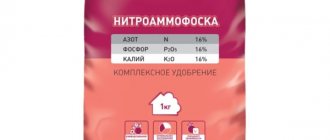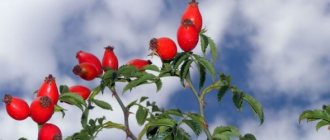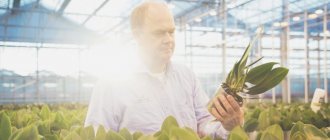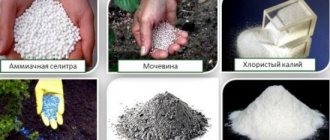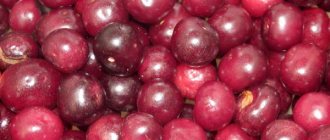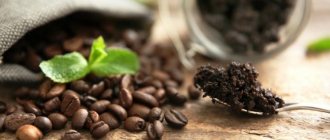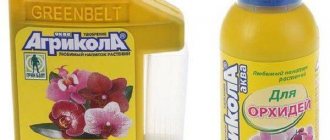Spring fertilizing is one of the most important procedures at the beginning of the gardening season. These fertilizers should provide the awakening crops with enough strength and “means” to begin sap flow and form the first greenery - especially if you forgot or did not have time to fertilize in the fall.
What fertilizers for the garden, vegetable garden, flower garden and lawn should you prefer in the spring, is it possible to mix them, what portions does each plant need?
Here are the six most popular and in-demand spring fertilizers that every summer resident should have in stock. Please note that these fertilizers are suitable for almost all crops, because in the spring all plants need almost the same substances, but each one needs a different dosage of fertilizers.
Place in the general classification
Experts use this scheme, which makes it easier to understand the purpose and function of fertilizing:
- Simple - include one element. It can only be nitrogen, phosphorus or potassium, respectively, simple fertilizers can be nitrogen, phosphorus or potassium. They only act in one direction. As a rule, an increase in a single element increases the deficiency of another, so such supplements cannot be considered exhaustive. They are often combined with each other, preparing the compositions independently, or adding them one by one.
- Complex - they combine 2 or 3 main elements in the formula, so they better satisfy the plant’s need for essential minerals.
To understand what kind of nitrogen-potassium fertilizers they are, you need to understand the terminology. They are classified as mineral complex fertilizers. The composition includes inorganic elements that affect the functions of plants. The action is determined by the proportion in which macronutrients are present. From the name you can understand that the main active ingredients of this group are nitrogen and potassium. Sometimes an organic component can be added to the complex, which will only expand the range of actions.
Complex fertilizers that are used to feed seedlings
It is a set of mineral and organic additives. Available in the form of granules or concentrates. In case of overdose, they can cause the accumulation of nitrates in the soil, so you should strictly follow the recommendations for dilution and use indicated on the packaging.
Mineral-organic additive "Krepysh"
The composition includes nitrogen, potassium, phosphorus, as well as a set of additional microelements. Does not contain chlorine. Three types of feeding are available:
- “Strong with potassium humate” contains an increased amount of potassium.
- “Strong for seedlings” contains an increased amount of nitrogen.
- “Strong” in the form of a liquid solution. Contains a high amount of sulfur.
Fertilizer "Krepysh" is universal, suitable for all types of crops. Tomatoes and grapes especially love this feeding. To fertilize seedlings, you can alternate between “Krepysh for seedlings” and liquid “Krepysh”.
Fertilizer "Athlete"
The drug "Athlet" contains substances that inhibit the action of growth hormone - gibberellin. It is used mainly at the stage of seedling germination. Properties of the drug:
- improves the appearance of the plant;
- prevents excessive stretching of seedlings;
- helps strengthen the root system;
- causes shortening and thickening of the green part of the plant.
- increases the flowering period of ornamental plants.
Analogues of "Athleta" are the drugs "Kornevin" and "Fitosporin". However, unlike Athlete, they do not slow down the growth of shoots.
The drug "Fertika"
Available in various combinations of mineral and organic additives:
- "Fertika-lux" . A universal remedy with a balanced composition of nutrients. Used to accelerate plant growth, as well as during the formation of buds and ovaries.
- "Crystalon" . Contains high magnesium content. Suitable for fertilizing tomatoes, eggplants, potatoes, beets.
- "Universal" . Contains an increased amount of potassium. It is introduced into the soil together with digging the earth in the spring.
- "Autumn" . Suitable for any type of soil. Contains increased amounts of potassium and phosphorus. It is introduced into the soil in the fall when digging the ground.
- "Floral" . Used for ornamental crops. Fertilizer is scattered near the roots of the plants.
- "Lawn" . Has a balanced composition with a prolonged period of action
- "Coniferous" . Apply during planting and throughout the season. Suitable as a top dressing for crops that prefer acidic soil.
Fertika preparations are available in the form of granules or concentrates. The product is used for regular watering or added to the soil.
Manufacturing technology
Combined compositions of two or more main components are also called complexly mixed. They are produced in production using a single technological process, the result of which is a common granule that includes both elements. Primary raw materials are subject to chemical and physical processing.
The ratio of nitrogen and potassium varies among this group. You can see it on the packaging in the form of the standard formula N:K:F (nitrogen:potassium:phosphorus). If the first and last elements have natural digital values, and the middle one is 0, then the fertilizer is a nitrogen-potassium fertilizer.
Combined complexes contain very little so-called ballast substances. They are needed so that the substance can be stored longer or are simply a by-product of the complex synthesis reaction that does not affect the nutritional parameters of the soil. The fewer there are, the more nitrogen and potassium will be in the volume. This is very important when it comes to large purchases and transportation of products, unloading and ease of application into the soil.
There is another type - mixed complexes. They are obtained as a result of dry mixing of individual components at an agricultural company or farm immediately before application. On the one hand, this requires labor, but on the other, it makes it possible to produce precisely such compositions in which the proportion of nitrogen and potassium is exactly what is needed at this stage.
Organic fertilizers for seedlings
This type of fertilizer contains a set of micronutrients in the form of organic compounds. In addition to nitrogen, potassium and phosphorus, the composition includes many additional microelements - zinc, magnesium, calcium and other substances.
Organic fertilizers include:
Manure.
Fresh or rotted droppings of farm animals. The most commonly used is cow or chicken manure. It contains a high concentration of active substances, so it is not used in its pure form. Fertilizer is applied to the soil when digging the ground. For additional feeding, use a weak aqueous solution.
Humus.
It is a complex fertilizer obtained by rotting plant residues over several years. Humus is added to the soil and used to create high beds.
It saturates the soil with useful microelements, improves its structure, and helps retain moisture in the soil.
Vermicompost.
It is manure processed by worms.
Contains a complex of microelements that help strengthen the plant's immunity and develop a strong root system.
Can be used on any type of soil.
Peat.
It is a product of decomposition of plant or animal residues.
Contains a large amount of micronutrients.
Peat in its pure form is not used for fertilizing.
It is used for preparing soil mixtures and arranging high beds.
Bone flour.
Obtained by grinding the bones, horns and hooves of cattle. Completely decomposes in one season. Eco-friendly product does not cause burns. Does not cause accumulation of pesticides and nitrates in the soil.
Green manure.
Some plants, as they grow, are able to improve the structure of the soil and saturate it with useful microelements.
These include: mustard, rapeseed, clover, rye, alfalfa.
Sawdust.
Most often used for mulching the soil. They have a long period of rotting, so it is not recommended to embed sawdust into the soil. They improve the structure of the soil and are able to regulate its acidity.
Helpful information
Daria Vorontsova
Amateur gardener. He is interested in growing various greens at home.
Fresh sawdust absorbs large amounts of nitrogen, so it must be mixed with manure.
Organics are completely environmentally friendly and safe. It does not cause soil poisoning. The main disadvantage of this type of fertilizing may be the need to use a large amount of fertilizer.
The role of macronutrients
Each element has its own function. Specialists can determine a deficiency or excess of a macronutrient by external signs, but sometimes laboratory analysis is also necessary. To make it easier to find out whether a crop needs the addition of nitrogen-potassium complexes, you need to understand how they act and what they affect.
Nitrogen
Nitrogen is the main substance for plant development. It is considered the main building material, without which the mass of the plant organism will not increase. Many vital functions come with its participation.
Main role:
- participates in metabolism;
- ensures active growth of young shoots and leaves;
- part of proteins, chlorophyll, etc.
Signs of deficiency of this substance are:
- weak growth of shoots, they are short and may have an irregular shape;
- insufficient volume of foliage, leaves become pale;
- insufficient crown branching;
- weak bud formation;
- young leaves acquire a red tint and fall off, and old leaves turn yellow, starting from the midrib;
- small fruits that fall early before they ripen.
Potassium
Potassium performs many functions in plant life:
- improves the condition of the cytoplasm, normalizes swelling processes, making viscosity optimal;
- activates photosynthesis and the formation of organic acids in plant tissues;
- participates in carbohydrate and nitrogen metabolism;
- increases the activity of enzymes such as sucrase and amylase;
- enhances the accumulation of starch in root vegetables;
- improves the winter hardiness of crops due to the presence of sugars and increased osmosis inside the cells;
- increases plant immunity;
- improves the keeping quality of the crop.
Potassium deficiency can be judged by the following signs:
- change in foliage color: young foliage acquires a bluish tint, and old foliage turns yellow or brown;
- the appearance of dark spots on the foliage, dryness along the edges, heterogeneity and “corrugation” of the leaves;
- stopping plant growth;
- rapid loss of turgor in the absence of rain or watering.
At different stages of growth and for different types of crops, the need for both of these elements changes.
The need for complex application
Hobbyists often have a question about the need to use nitrogen-potassium fertilizer, and not nitrogen and potassium separately. This is explained by the fact that at a certain level of one element, a proportional change in the dosage of the other is necessary, since their consumption is directly interrelated. For example, potassium deficiency increases with the active supply of nitrogen to the soil. They both participate in different reactions, and if one trace element is missing, then these processes will not be able to complete normally.
An excess of nitrogen ions with a lack of potassium will lead to the accumulation of unprocessed nitrite in the tissues, which will poison the flower or tree from the inside.
Lack of phosphorus and potassium in the soil
These elements are necessary for almost any vegetable or ornamental crop, and therefore their deficiency negatively affects fruiting and flowering.
The fruits lose their sugar content, become less tasty, and the flowers become smaller and faded. In addition to taste and appearance, the yield and keeping quality of vegetables and fruits also suffer; they spoil faster and are stored worse. It is important to fertilize on time to avoid these troubles.
Potassium deficiency
The sooner a deficiency of a particular mineral is identified, the less it will affect the vital indicators of plants. Therefore, you should think about feeding in advance. Soil type can be a clue in identifying the risk area. Sandstones, super sandstones and peatlands are often deficient in potassium. The same applies to lands in floodplains.
Advantages
Nitrogen-potassium mineral fertilizers have a number of advantages. The main thing is balance, since vital components are supplied in the right combination. Another advantage is the narrow specialization, since there are different types of complexes with nitrogen and potassium on sale:
- seasonal - for spring, summer and autumn;
- unidirectional - for flowers, for potatoes, for conifers, etc.;
- highly concentrated, which will ensure low costs and ease of use.
They differ in the content of each component and the presence of ballast or auxiliary substances.
You can choose any suitable form:
- granules;
- solution;
- water soluble powder.
This makes fertilizing simple and applicable for professionals and amateurs alike.
Seasonality and species requirement
Fertilizing with nitrogen-potassium fertilizer depends on the season. For example, nitrogen consumption is highest at the stage of development of plant vegetative organs. Cell division directly depends on this macronutrient, so when there is a deficiency, growth stops. Then, throughout the season, the supply of this element should be more uniform.
It should be taken into account that in the form of nitrate compounds the release and loss of nitrogen occurs very quickly, so it is better to apply such complexes often, but little by little. In the form of ammonium, this substance takes much longer to decompose, so such compounds are added less frequently.
When it comes to potassium, the ability to grow healthy, viable crops depends on whether it is available to the seedlings during the first two weeks after emergence. The maximum demand occurs at the time of rapid growth of biomass. In flax, potatoes and cereals, consumption stops at the beginning of flowering. For other varieties, the supply should be more uniform.
The most potassium-loving plants are beets, potatoes, corn, sunflowers, and corn. They consume this element more actively than beans, cereals, herbs, etc.
How to deposit
Nitrogen-potassium fertilizers can be applied in different ways, depending on the season. The main recommendations are:
- In spring - before plowing the ground or directly into planting holes before planting. Application into holes is more labor-intensive, but the most economical and effective.
- In summer - along with watering, so solutions are preferable rather than granules, which are more difficult to dissolve in water.
- In autumn - after harvesting, apply to replenish and restore the balance of soil nutrients. The granules are distributed over the surface before digging up the area.
In summer, it is also possible to apply the complex during hilling, but it is desirable that the granules do not directly touch the shoots or foliage.
In the warm season, foliar feeding is also sometimes used. This means that the ground mass is treated with the solution. The method is perfect for cases of severe deficiency of any of the elements included in the composition, since absorption and restoration proceed much faster than with absorption through the root system.
The need for potash fertilizers
Potassium, as a useful substance, is not a specific energy source or builder for the plant, it is a kind of dispatcher. Its main function is to promote basic nutrients from the root to young shoots at the development stage. It is potassium that helps to use water as efficiently as possible, develops the root system, they become more hardened to low temperatures and diseases. Potassium deficiency is manifested by the following factors:
- The leaves lose their natural color and turn pale;
- Darkening appears on the surface of the leaves;
- Drying of the edges is noted;
- The shape of the leaves is deformed, which can become very curled and wrinkled;
- Growth stops completely, and the total distance between nodes is shortened.
As a result of such actions, the leaves fall off very quickly, and the fruits ripen completely unevenly. If the soil is greatly oversaturated with potassium, all plants will begin to lack other substances, for example, magnesium. This leads to the fact that the fruits quickly rot, their flesh becomes brown, and a certain pitting appears. As a result, light spots appear on the leaves, which gradually become more numerous and dry out. At the same time, the shoots become very thin.
Excess
When using nitrogen-potassium fertilizers, the principle of “rational feeding” is important. It involves controlling the application of macroelements to prevent their excess in the soil. A sign that the soil is oversaturated may be the appearance of pale veins on the leaves, which turn brown over time, after which the leaf blade falls off. The growth of tops to the detriment of flowering and fruit formation is also considered one of the features of excessive application of complexes with nitrogen and potassium.
Basic fertilizer elements
Fertilizers for indoor plants include:
- nitrogen, it is this element that contributes to the constant development of plants; if there is not enough of it in the soil, then the process of leaves withering and a change in their color begins;
- Phosphorus is no less important, its low concentration slows down the vegetative development process, the leaves change their bright color to faded;
- if there is little potassium in the soil of a flower pot, the plant either does not bloom at all or throws out too small inflorescences;
- wilting of the foliage of indoor plants may be the cause of a lack of sulfur;
- if the foliage dies off at the very tops of the plants, and the rest of the crown generally looks intact, then the plant does not have enough calcium;
- No less important and necessary are elements such as iron, molybdenum, magnesium, manganese, copper and boron.
All fertilizers for indoor flowers and branchy green plants are classified into two types - organic and mineral.
Forms
When choosing a preparation for fertilizing, you need to pay attention not only to the name of the nitrogen-potassium fertilizer, but also to the formula reflecting the mass fraction of each component.
The following types of nitrogen-potassium complexes can be found on sale:
- Potassium nitrate (potassium nitrate) is a nitrogen fertilizer that contains potassium salt of nitric acid. The substance dissolves well in water, while it is non-volatile and without a distinct odor. This compound is practically not harmful to living organisms. Used as a top dressing for vegetable, fruit, flower and ornamental crops. As a rule, the concentrations of different solutions are indicated in the instructions for the drug.
- Potassium cyanamide is used very rarely and is difficult to find on sale. This is due to the fact that it has a toxic effect on humans and animals. It is a white powder with a noticeable odor of kerosene. When working with it, you must follow safety precautions: work with gloves and goggles, protect your respiratory organs with a respirator. Because of these features, it is used only in industrial cultivation of crops.
Potassium nitrate
Potassium cyanamide
Both forms can be used at the root or as a spray.
Fertilizer for seedlings from improvised means
Some plant or animal waste can be used as fertilizer. The advantages of this type of fertilizer are:
- You can save on buying ready-made fertilizers.
- Fertilizers made from waste are environmentally friendly and safe. They do not cause soil poisoning in case of overdose.
- They decompose quickly.
The downside is that it will take some time to accumulate the required amount of material for feeding.
Fertilizers from improvised means can be used in crushed form, added directly to the soil or in the form of infusions or decoctions as top dressing.
Helpful information
Daria Vorontsova
Amateur gardener. He is interested in growing various greens at home.
In addition to saturating the soil with useful substances, fertilizers from food waste can protect plants from fungal diseases and insect pests.
Onion peels for feeding seedlings
An infusion of onion peels is most often used for watering plants. In addition to nutritional properties, it also has fungicidal properties.
To prepare the solution, pour the husks with hot water and infuse until the color of strong tea appears. When prepared in this way, it does not need to be further diluted with water.
Onion peels can be placed in the holes before planting. Seedlings of peppers and tomatoes especially love this type of fertilizer.
Ash fertilizer
Waste combustion products can be used on the site as fertilizer. Ash is a storehouse of useful microelements. It can be used as infusions or placed in the soil before planting. If you dust the seedlings with ash, this will help protect the tender sprouts from insect pests.
Ash is good to use as a top dressing for:
- berries;
- potatoes;
- cucumbers;
- zucchini.
Ash solution in large quantities can oxidize the soil. Therefore, it is recommended to mix it with fertilizers with a high nitrogen content.
Fertilizers for seedlings from eggshells
The shell contains large amounts of calcium, magnesium, nitrogenous substances and lipids. Fertilizer can be used:
- to improve soil structure;
- to reduce soil acidity;
- to speed up seed germination;
- for the installation of a drainage system;
- as protection against pests;
- for root feeding.
The shell is used as an infusion for irrigation. When crushed, they are scattered directly onto the beds or embedded in holes before planting.
Helpful information
Daria Vorontsova
Amateur gardener. He is interested in growing various greens at home.
Shell fertilizer is well suited for legumes, stone fruits, pome fruits, and citrus crops. For flowers, fertilizing should be done carefully, since not all species like excess calcium in the soil.
Yeast fertilizer for seedlings
Yeast fertilizers contain:
- Active substances that stimulate plant growth: vitamins, auxins, phytohormones.
- Carbohydrates, iron, proteins;
- Cytokinins are hormones that regulate cell growth and division.
You can use raw pressed or dry yeast as fertilizer. They are poured with warm water and infused for several hours. The resulting solution is watered over the seedlings.
Yeast feeding is universal; it is suitable for almost all plants. The exceptions are onions, garlic and potatoes.
It is not recommended to use expired yeast as a top dressing. The fungi in them are weakened and, most likely, will die under the influence of bacteria living in the soil.
Banana peel fertilizer for seedlings
It is known that during the decomposition of banana peels, ethylene gas is formed, which accelerates the ripening of the fruit. Therefore, this type of fertilizer can be used to stimulate the growth of seedlings.
- Flowers love banana peel fertilizer. The buds become larger and become brighter in color.
Banana peels contain high levels of sugars that can attract ants and other insects. Therefore, it is not recommended to lay it out on the surface of the bed.
Helpful information
Daria Vorontsova
Amateur gardener. He is interested in growing various greens at home.
Banana peels can be embedded in the soil in crushed form or used for irrigation in the form of decoctions or infusions. The peel contains a large amount of minerals, so it must be handled carefully so as not to cause an overdose in plants.
Terms of use
When using nitrogen-potassium fertilizers, you must remember the following points:
- Transportation and storage must take place under the condition that the packaging is sealed and insulated from moisture, since the compound is hygroscopic. It absorbs moisture and not only becomes soggy in structure, but also loses its chemical properties.
- When dissolved in water, heat is absorbed and the solution turns out cool. Plants do not like cold liquids getting on their roots or foliage, so part of the water must be heated so that the temperature of the solution is a couple of degrees higher than the environment.
- It is necessary to ensure that during work this substance does not come into contact with the skin or eyes. When diluting, it is recommended not to lean low over the container and not inhale the vapors.
- It is best to prepare the composition not in a metal bucket or container, but in plastic.
- All prepared solution must be used on the same day. It cannot be stored, as the nitrogen compounds will erode or create new complexes that are not absorbed by plants.
If you adhere to all these rules, then you can get excellent results when using nitrogen-potassium fertilizers.
How not to harm the soil and crops
The fear of nitrates did not arise out of nowhere. Decades ago, farmers diligently applied nitrogen to produce bumper crops. The volume of agricultural products grew, but the quality left much to be desired - plants overfed with nitrogen could not be stored for long, contained nitrates and nitrites, and were not of high quality. To maximize profits, cheap saltpeter was used in huge quantities.
Modern agronomists have learned to wisely fertilize with nitrogen, phosphorus, and potassium - they accurately dose the preparations and adhere to the prescribed deadlines. As a result, the soil is enriched, the quality and taste of the crop improves, and the volume of agricultural products increases.
Organic lovers should know that adding fresh mullein at the end of summer is fraught with the same problems as excessive use of saltpeter. It is correct to apply manure in the spring, and then only by choosing crops that are not afraid of an excess of the substance.
In addition to the dosage, you need to know the best time to use nitrogen-phosphorus and potassium fertilizers, take into account the characteristics of the soil and the growing stage of the plant.

